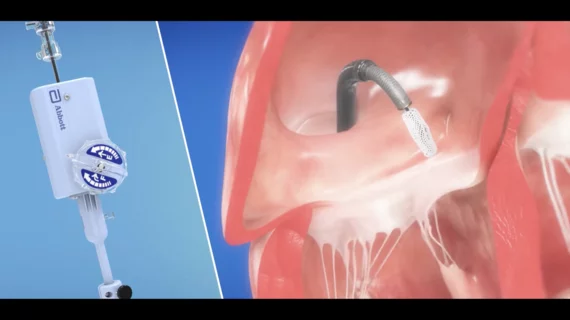TriClip triumphs: Tricuspid edge-to-edge repair linked to strong 30-day outcomes in real-world setting
Tricuspid transcatheter edge-to-edge repair (T-TEER) is a safe and effective treatment for real-world patients presenting with severe tricuspid regurgitation (TR), according to new research published in the Journal of the American College of Cardiology.[1] The study focused on more than 500 patients treated with Abbott’s TriClip device in Europe.
“Medical therapy, which is currently the standard of care for patients with TR, is largely limited to diuretic use and often can require intravenous diuretic administration in hospital or out-patient settings,” wrote first author Philipp Lurz, MD, PhD, a cardiologist with the University of Leipzig in Germany, and colleagues. “In recent years, increasing awareness of TR and its association with poor clinical outcomes have reinvigorated the need for improved treatment options. Among other interventional approaches, T-TEER has been proposed and applied as a nonsurgical therapy to reduce TR with promising early results.”
Hoping to learn more about the use of T-TEER in a real-world setting, Lurz et al. examined data from 511 patients treated the TriClip device at one of 26 European facilities. The mean patient age was 79 years old and 56% of patients were women.
While the TriClip device is still only approved for investigational use in the United States, it received full CE mark approval in April 2021.
Overall, implantation success was seen in 99% of patients. Procedural success—defined as implantation success with a significant reduction in TR—was seen in 91% of patients. The mean device time was 76 minutes. Clips were placed on the patient’s anteroseptal leaflets 73% of the time, their septal-posterior leaflets 22% of the time and their anterior-posterior leaflets 5% of the time.
At discharge, TR severity was moderate or less for 80% of patients compared to just 2% of patients at baseline. Those reductions, the authors noted, were still seen weeks after implant.
“The TR reduction was shown to be durable at 30 days for the 389 subjects with evaluable TR severity at both baseline and 30 days’ follow-up, with 77% of subjects evaluated as moderate or less,” the group wrote.
The study’s authors also highlighted the “significant improvements in functional capacity and quality of life” seen at 30-day follow-up visits. In fact, 79% of patients were categorized as New York Heart Association functional class I or II after 30 days, up from 20% at baseline. Also, all-cause mortality after 30 days was 1%, and there were no cases of myocardial infarction or embolization after 30 days.
“T-TEER was found to be safe and effective in treating significant TR in a diverse, real-world population,” the authors concluded, noting that additional research is still required to improve patient selection going forward.
Read the full study here.

